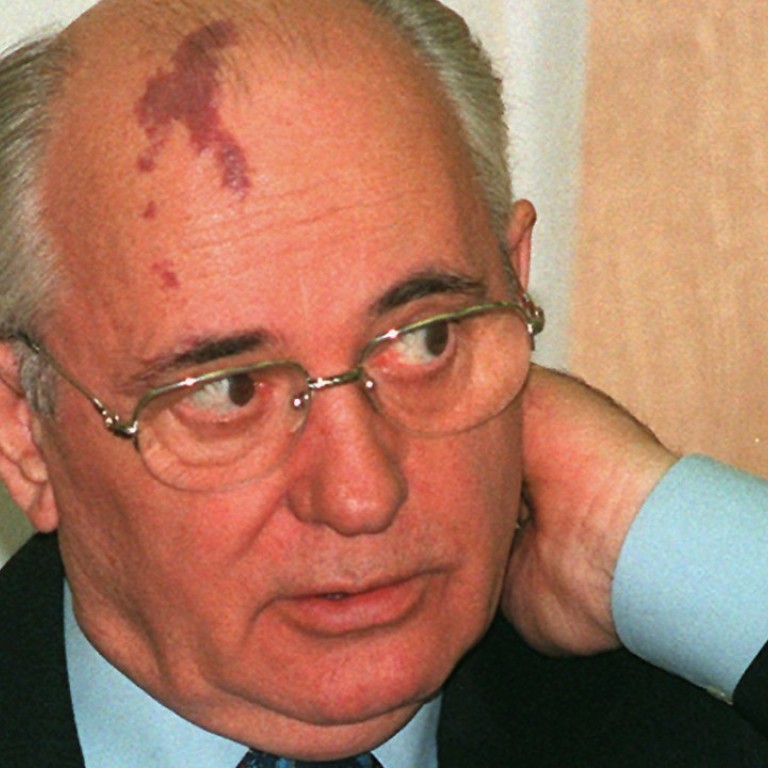
China and India to Iran and Korea, why Russia is the Asian player to watch
From arms to energy, Russian influence in the region is growing ever greater – and key to Moscow’s route to dominance is its unique relationship with Beijing
As a global power and leader of the socialist camp, in the cold war era the Soviet Union was a major player all over the world – and Asia was no exception. The USSR’s close ties with Maoist China that lasted until the late 1950s and the confrontation that followed, its role in the division of the Korean peninsula, its support for North Vietnam and the Viet Cong in Indochina, its ill-fated military campaign in Afghanistan, and its special relationships with India and the Iran of Shah Mohammad Reza – all these helped shape the politics of the continent. But with the end of the cold war things changed drastically.
In 1986, Mikhail Gorbachev delivered a historic speech in Vladivostok, proclaiming the Soviet Union’s “turn to the Asia-Pacific”and vowing a new approach, perestroika and new political thinking, with an emphasis on security for all nations, priority of common human values, cooperation, and understanding of each other’s interests.
This approach was fundamentally different to the conventional Soviet policy in Asia: the new Soviet Union sought to realise its potential as the regional power, as an integral part of the Asia-Pacific, as a fully fledged player not only on the diplomatic and security fronts, but in fields from economics and trade to education and culture.
Vladivostok, a military outpost and a closed city, was opened up to foreigners, offering a window to the Asia-Pacific.
Only Asia can save Russia and the West from themselves
Initially, most Asian countries were cautious about Moscow’s new Asia-Pacific drive. They found it difficult to recognise either the Gorbachev-era Soviet Union or the new Russia as integral parts of Asia. Was Russia really an Asian country, people would ask. The Japanese coined an interesting term when referring to the Russian Far East; an enclave of European culture on Asian territory. The feeling was mutual – people in the Russian Far East also saw Asia as distant. In the late 1980s, while lecturing at a factory in Amur province, which is so close to China you can see the city of Heihe across the river from the provincial capital Blagoveshchensk, I said “your neighbours”, referring to the Chinese. The audience didn’t get it. When I explained, they took it as a joke.
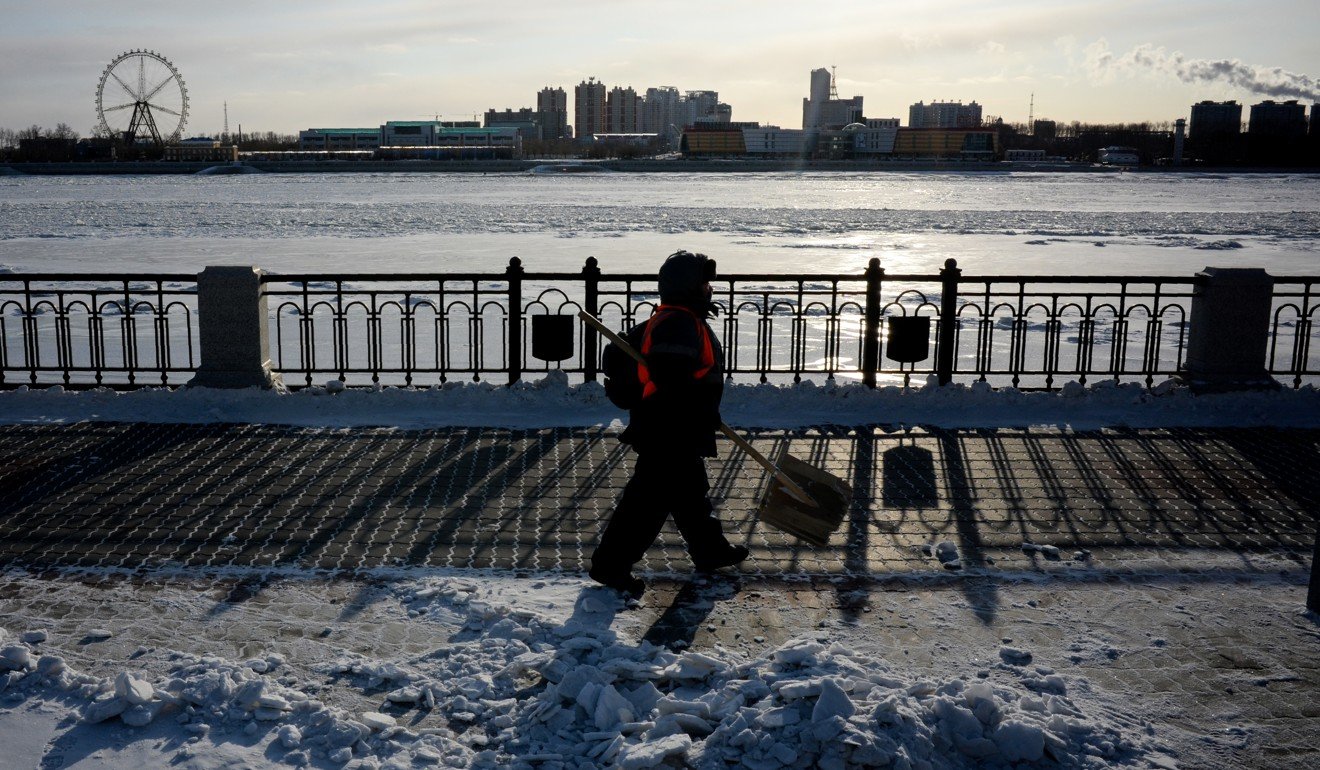
In 2001, together with China and the newly independent Central Asian states, it established the Shanghai Cooperation Organisation, aimed at building trust in military matters, and fighting terrorism and drug trafficking. Members of the organisation now intend to cooperate in a much wider range of fields, including trade, investment, energy and culture. In the long term, they have even pledged to establish a free-trade area.
In 2014, Moscow, Kazakhstan and Belarus launched the Eurasian Economic Union, which was later joined by Armenia and Kyrgyzstan. Many Asian countries are now keen to work with it, and possibly even join, including India.
Meet the Russian risk takers making safe Singapore their home
Having hosted the Apec summit in Vladivostok in 2012, three years later Russia established the annual Eastern Economic Forum – an increasingly high-profile gathering of Asia’s top leaders, officials and businessmen.
There are several reasons why Russia is now putting so much energy into establishing itself as a regional player.
Firstly, it has become stronger economically and financially, and has learned to leverage its strength as a major exporter of energy resources, as a transport route linking Asia to Europe, and as the world’s second-largest arms exporter.
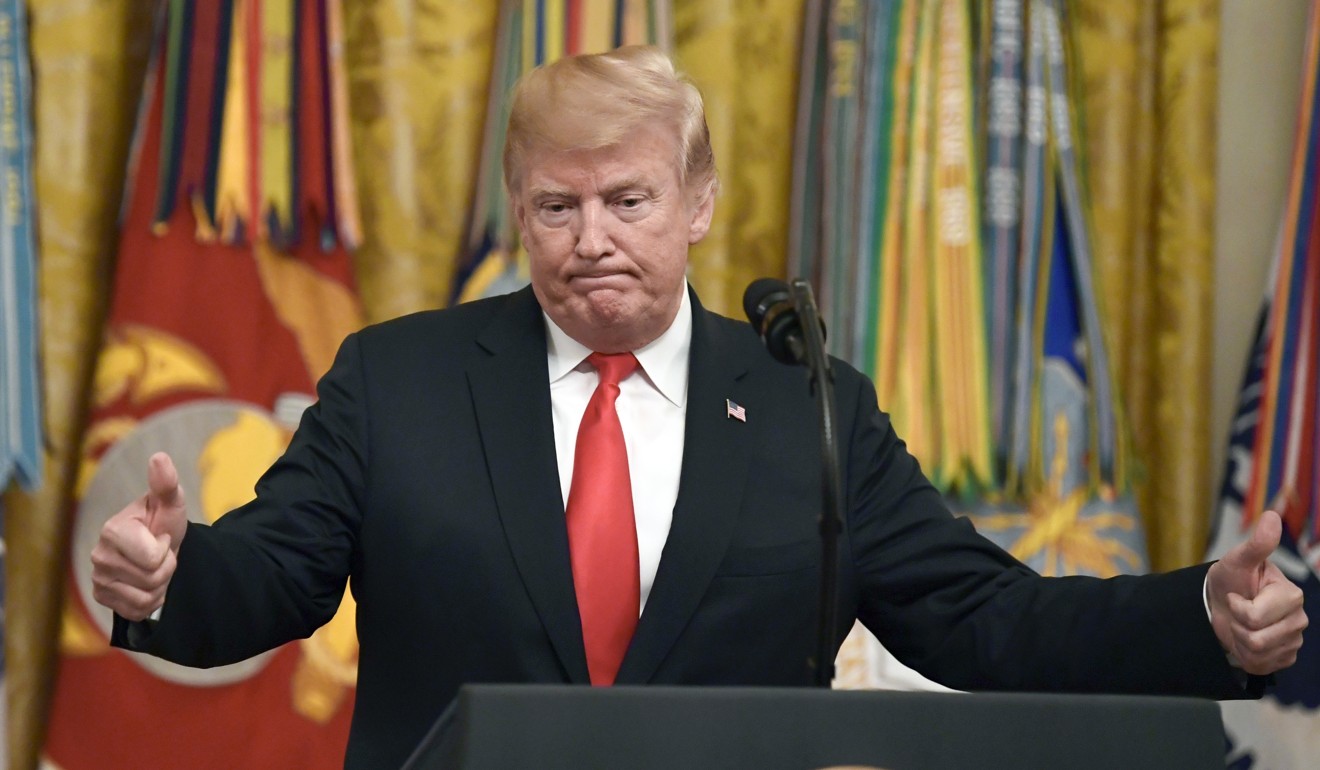
Thirdly, Moscow has proved capable of generating fresh ideas about how to address the continent’s challenges and develop regional cooperation.
Russia’s diplomatic overtures in various parts of Asia, with all the differences in their specifics, have several important common features, forming what we can call Moscow’s Asia-policy model.
First, unlike the former Soviet Union, and perhaps also unlike the West, today’s Russia does not choose counterparts on ideological grounds. It remains 100 per cent pragmatic to achieve its geopolitical and economic goals.
Second, it takes bold, original steps, sometimes seeking to perplex its counterpart, especially if it belongs to the “Western camp”.
Third, it persistently pursues a “no isolation” strategy, vigorously developing relations with the regimes at odds with the US and other Western powers. This, however, does not prevent it from deepening ties with Asian nations that are friendly to the West.
Thus, the fourth major feature of Moscow’s Asian policy is increasing diversity and flexibility.
Of all of modern Russia’s overtures to Asia, especially important is the deepening of its unique relationship with China.

China is gradually becoming one of Russia’s biggest foreign direct investors as well.
The two governments have launched a joint investment fund, which recently established a 1.5 billion yuan regional investment fund with China’s Suyong Holdings and Dazheng Investment group to promote investment projects in both countries.
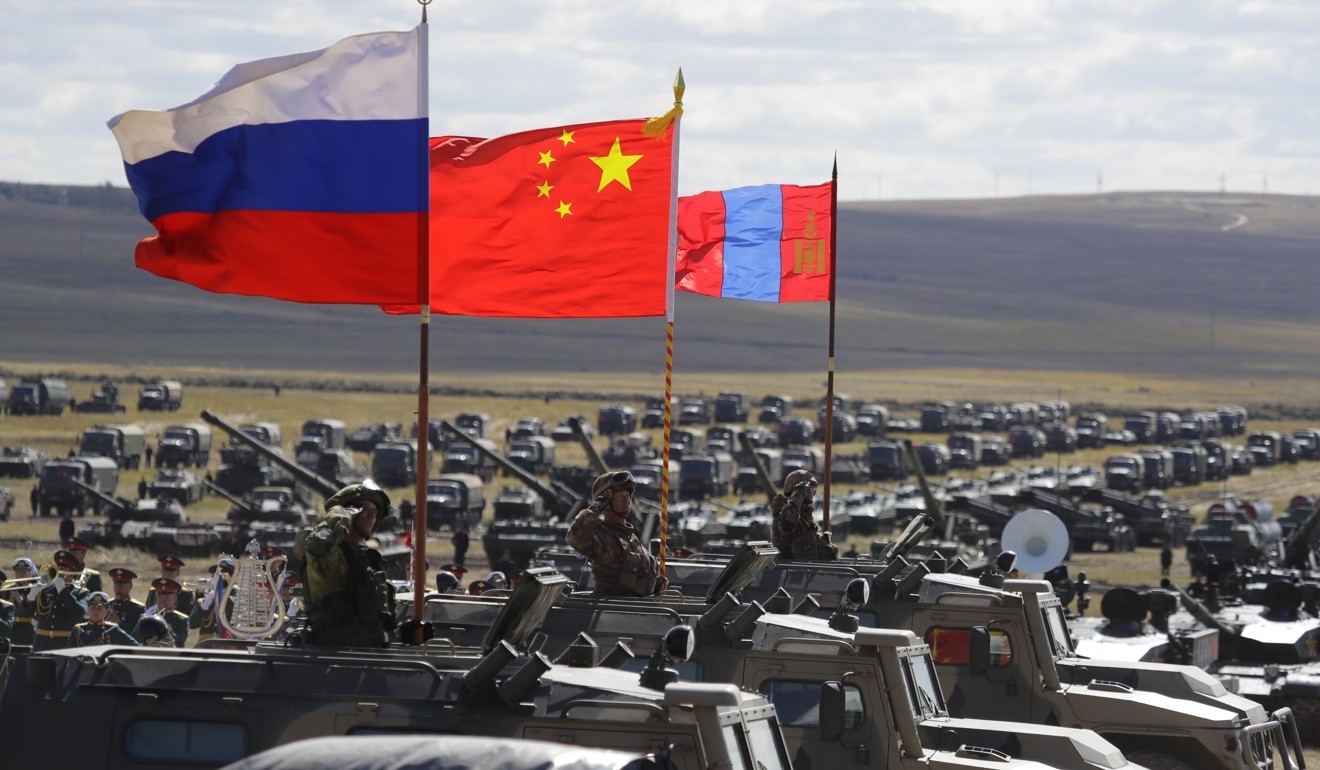
In the words of Russian defence minister Sergei Shoigu, Vostok 2018 resembles Zapad 81, a comprehensive drill the Soviet Union held with its Warsaw Pact allies in 1981, but is greater in scale. (Vostok is the Russian word for east, zapad is west). There were more than 1,000 aircraft taking part in this year’s games. Moscow and Beijing appear to be well on the way to a defence alliance.
The intensifying defence ties rile the US. Washington this week placed financial sanctions on the Equipment Development Department of Chin’s Ministry of Defence and its top administrator for the recent purchase of Russian Sukhoi Su-35 fighter jets and S-400 surface-to-air missiles. On Friday, Beijing called on the US to withdraw the sanctions “immediately” or “bear the consequences”.
Russia has traditionally had cordial relations with China’s rival and another emerging giant of the region – India. Creating a Moscow-Beijing-New Delhi triangle has been Russia’s diplomatic dream since the late 1990s. The idea was most explicitly articulated by the then-prime minister, veteran diplomat and scholar Yevgeny Primakov, who called for a triangular relationship. As an advocate of a multipolar world order, he saw the triangle as a way to offset the global influence of America in particular and the West in general.
HEADING SOUTH
Along this line, Russia pushed the creation of the RIC (Russia, India, China) mechanism – regular meetings of these three countries’ foreign ministers. Though not as high-profile as the BRICS (Brazil, Russia, India, China, South Africa) group, it became a platform to exchange views on and coordinate approaches to key global and regional issues. The first meeting was held in 2003; the 15th, last year. Very cautiously, Moscow is trying to act as a buffer for tensions between Beijing and New Delhi.
Though RIC meetings do not deliver sensational outcomes, they create an atmosphere for productive Sino-Indian dialogue and for seeking common approaches to international issues.
Russia is now encouraging Beijing and New Delhi to raise their voices against trade protectionism and to speak out against what foreign minister Sergey Lavrov calls the erosion of global order and rising role of force. Within the RIC framework, the three countries have set up a new scheme of regular working-level consultations on Asia-Pacific issues and have launched regular trilateral meetings of young diplomats.
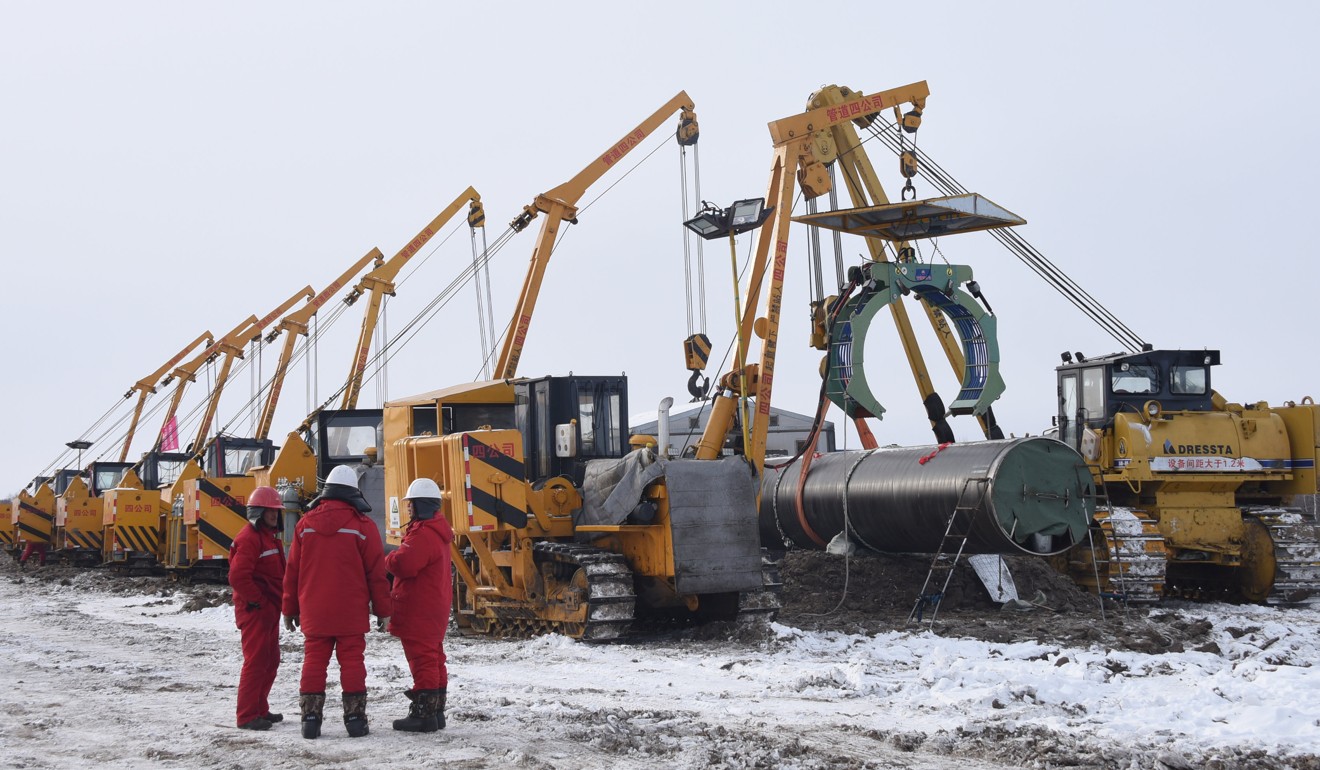
India and Pakistan last year became full members of the Shanghai Cooperation Organisation and took part in the group’s “Peace Mission 2018” anti-terrorist drill in the Chelyabinsk province in Russia’s Ural region. This was the first time the two South Asian arch-rivals had joined a common military exercise.
About 70 per cent of India’s arms and ammunition are reportedly Russian or Soviet made. New mega deals are in the making, including the delivery of S-400. India is also increasing its arms imports from the US and is keen to have closer relations with Washington, which has been pressuring New Delhi against arms deals with Moscow. For example, the contract on the S-400 deal, agreed in principle during Putin’s visit to India in 2016, is still to be signed.
Though good relations with India are vital, Moscow has hedged its bets with Pakistan. In 2014, Moscow and Islamabad signed a defence cooperation agreement, under which Russia lifted its de facto embargo on arms sales to Pakistan, overriding India’s concerns. It maintains that relations with Islamabad should not impinge on ties with New Delhi. As the first step, Moscow has delivered M-35 helicopters. Other possibilities are also under discussion, including the supply of SU-35 fighter planes, though it would be unrealistic to expect quick and dramatic breakthroughs. Russia is also to train Pakistani military personnel.
Economic ties are on the rise, too. Russia will build a gas pipeline linking Karachi and Lahore and may take part in a scheme to lease the state-owned Pakistan Steel Mill near Karachi built by the Soviet Union in the 1970s. Pakistan has shown interest in the conclusion of the free-trade agreement with the Eurasian Economic Union.
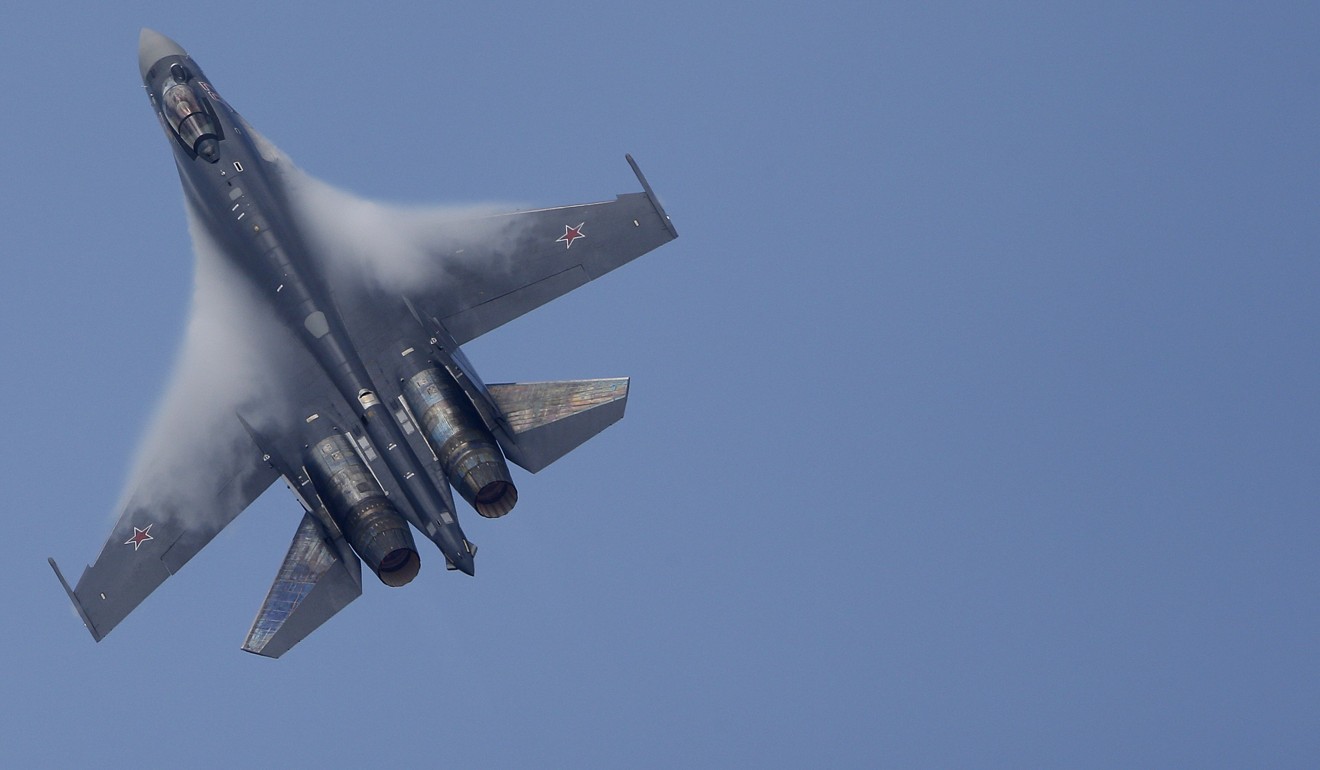
BIG IN JAPAN
The range of their economic cooperation plan is expanding and already numbers about 150 projects in various fields. One of the latest is the assembly of engines for Japanese cars in the Russian Far East.
Japan’s ultimate goal is the signing of a peace treaty with the return of the four Kuril Islands administered by the Soviet Union/Russia since the second world war as a precondition.
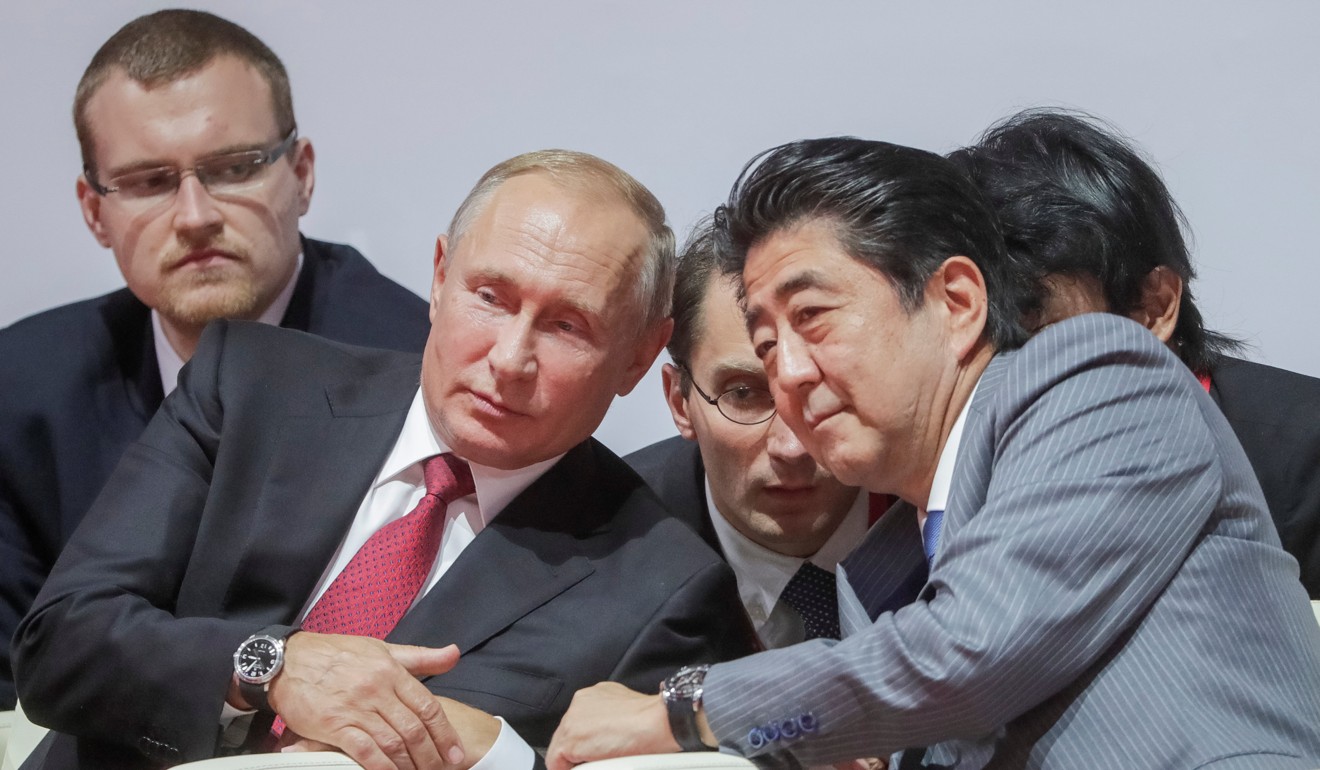
At the very beginning of his tenure, Putin proposed to return to the Japan-Soviet Union Joint Declaration of 1956, in which the two sides agreed Moscow would transfer two of the islands upon signing the peace treaty – only for Tokyo to refuse. Russia took an unexpected step this month at the Eastern Economic Forum, where Putin surprised Abe by openly proposing to sign the treaty first without any conditions – and after that, “as friends”, work on all the relevant issues.
Japan is in no position to accept the offer, but Russia has effectively raised the pitch for heightened friendship between the countries, making it difficult for Tokyo to cite the island issue for not playing along.

CONNECTING THE KOREAS
Russia is effectively the only major player in Northeast Asia that has a stable and deepening relationship with both Pyongyang and Seoul, and that is capable of three-way economic cooperation with them.
Moscow has been pushing for such cooperation from the early 2000s, with tensions between the Koreas hindering any progress.
The signing of the Panmunjom Declaration by the North and South Korean leaders in April, followed by the Singapore summit between Trump and Kim Jong-un this June, have, for the time being, drastically changed the political climate on the peninsula, setting the stage for a North-South rapprochement and making it easier to pursue three-way economic cooperation. This will increase Moscow’s economic and political role on the peninsula and in Northeast Asia as a whole.
In July, a delegation from the North Korean Chamber of Commerce visited the Russian Far East to discuss economic cooperation with the local authorities and businesspeople – from exports of ginseng-based medical and cosmetic products to the participation of Russian companies in North Korea-hosted trade fairs. Earlier, Russia had proposed opening a centre in Vladivostok that would coordinate and promote sales of North Korean products in the Russian Far East.
Moscow’s ideas largely match the policy goals of the Moon administration in seeking reconciliation with Pyongyang. They are also likely to get a favourable response from Pyongyang, not only because they can invigorate North Korea’s ailing economy but also because they would serve as a political guarantee for the regime.

At this point, three potential pillars of trilateral cooperation are in sight. The first one is integration of the rail networks of North and South Korea with the subsequent linkage of the trans-Korean and trans-Siberian railways. This plan is already on track, with relevant ministries in respective countries working out the specifics and no big technical or financial impediments in sight.
At their April meeting, Moon and Kim Jong-un agreed to connect the two countries’ rail and road networks as a first step to restarting economic cooperation. Moon has said they would start connecting them this year. In late April, South Korean ambassador to Russia Yu Yun-gin confirmed that Seoul was studying the possibility of the construction of a trans-Korean railway linking the Korean peninsula with Russia.
Why China-Russia relations are warming up in the Arctic
During the Russo-South Korean summit in June, Russian Railways and the Korea Railroad Corporation signed a memorandum on the start of a project to build a South Korea-Russia-Europe transport route – which would include the trans-Korean and trans-Siberian railways – at an estimated total cost of US$3 billion to US$4 billion. This will provide South Korea with a land route to deliver its goods to Europe, while North Korea will profit from transit fees and economic development of the adjacent areas.
In August, Moon called for the creation of the East Asian Railroad Community with the participation of the two Koreas, the US, Russia, China, Japan, and Mongolia. He compared it with the European Coal and Steel Community, the establishment of which was a step towards the birth of the European Union. He envisaged the creation of an Energy Community and Economic Community in the region as the next step. Also in August, it was reported there were plans for foreign cruise ships to visit both North and South Korean ports.
The second potential pillar is integrating the electricity supply networks of Russia and the two Koreas, which may pave the way for a Northeast Asian energy community. At the East Economic Forum in Vladivostok in September 2017, Moon called to integrate the electricity-supply networks of Russia, Mongolia, China, Japan, and the two Koreas. At this year’s forum, Putin again argued that the idea of an Asian “energy ring” was realistic. As Russia’s electricity remains cheap by international standards, the integration of electricity supply systems may bring substantial cost benefits to the entire region.
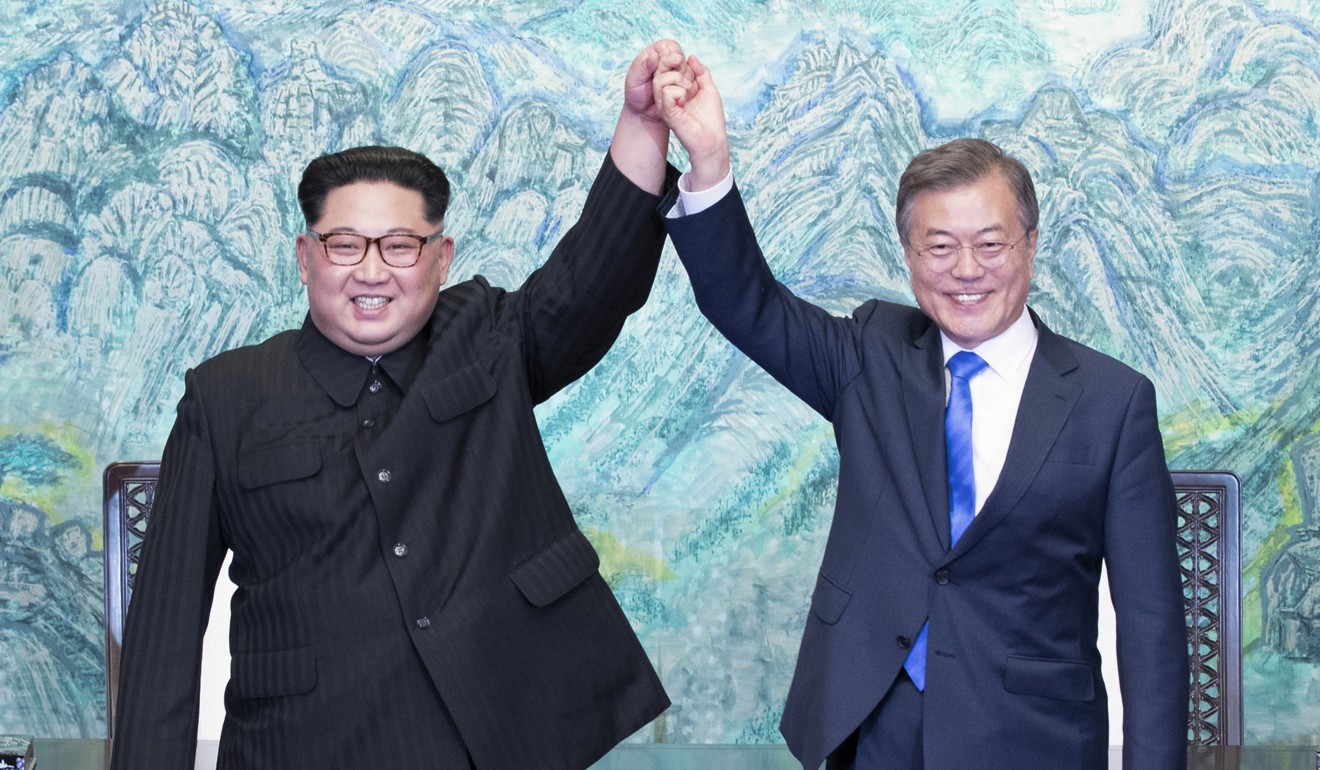
The third pillar is the construction of a pipeline to supply natural gas from Russia to South Korea through North Korea. In June, Gazprom announced the resumption of its talks with South Korean counterparts about the construction of a pipeline going through North Korea. It says it can deliver natural gas not only from the island of Sakhalin, but also from the Kovykta field in the Irkutsk Province in East Siberia and the Chayandinskoye field in the Saha Republic.
The length of the pipeline is estimated at 1,100km, including 700km on North Korean territory. It requires an investment of US$2.5 billion and would have a capacity of 10 billion cubic metres a year.
For Russia, the project is important not only to develop the lucrative South Korean market but also to strengthen its overall economic and geopolitical position on the peninsula and to boost the economy of its far eastern region. For South Korea, it would be the country’s first natural gas pipeline project. The country now only imports liquid natural gas (LNG). Last year it was the second largest importer of LNG in the world, at 36.7 million tonnes, after Japan. Natural gas delivered through a pipeline would be cheaper.
For North Korea, the project would not only bring significant revenues by way of natural gas transfer but also provide an impetus for developing infrastructure and modernising the economy. It could also give it access to Russian natural gas later.
How China and India can keep the peace in Ukraine
Political risks abound, of course. The US remains Seoul’s major political and military ally. It also competes with Russia for LNG supplies to South Korea. On its part, China, a prospective major importer of Russian natural gas, may also be wary about the emergence of a new big buyer that could increase Russia’s bargaining power as an exporter.
Beyond rail, electricity and gas linkages, Moscow, Seoul and Pyongyang may also launch joint projects to develop North Korean seaports and other infrastructure and promote special economic zones in the country. But prospects for trilateral cooperation will largely depend on how relations between Pyongyang and Seoul shape up. There’s still no road map towards North Korea’s denuclearisation, while South Korea considers complete denuclearisation of the North a condition for fully fledged economic cooperation. The UN sanctions against Pyongyang would also have to be lifted or substantially eased, something Russia has been pressing for increasingly harder.
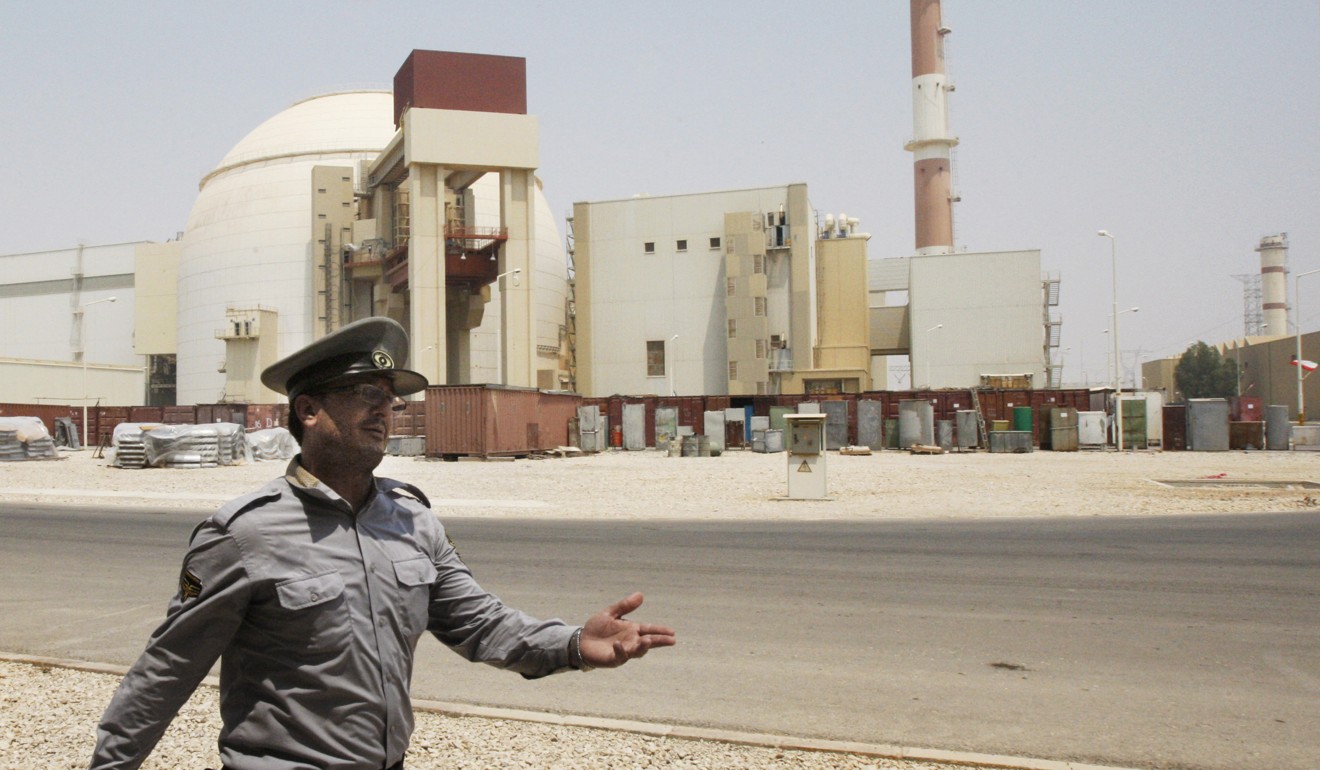
THE IRAN PLAY
After the Islamic revolution, bilateral relations became complicated if not strained, but were put back on track following the emergence of the administration of pragmatic and internationally oriented President Hassan Rowhani. For Moscow, Tehran is important as both a diplomatic and economic partner.
Among other things, the two countries closely cooperate in Syria. Russia was one of the parties in the talks resulting in a deal on Tehran’s nuclear programme. Russo-Iranian economic ties started to expand soon after the international sanctions against Iran were lifted.
The two sides agreed to launch a number of bilateral projects, worth US$40 billion in total. Russia will build the second and third unit of the Bushehr nuclear power plant in Iran. In 2015, it lifted the ban on exports to Iran of S-300 air-defence missiles and completed their delivery in 2016. The contract was signed in 2007, but in 2010 Moscow froze it after international sanctions were imposed on Tehran.
Last year, it started to import Iranian oil in exchange for merchandise of goods including wheat and other foodstuffs. Bilateral trade turnover reached US$1.7 billion in 2017.
Russia has also pledged to work towards settling the issues stemming from America’s withdrawal from the Iran nuclear deal. It is trying to mitigate the negative effects of Washington’s re-imposed sanctions against Tehran, calling those sanctions illegal.
There is again a link to Azerbaijan, a former Soviet Union republic. Moscow, Tehran and Baku are boosting trilateral cooperation. In a major step, they have inaugurated regular trilateral summits. The first meeting of Putin, Rowhani and Azerbaijani President Ilham Aliev was held in Tehran last November; the second will take place this year in Moscow. One of the major joint projects the troika is launching is the development of the North-South transport corridor, connecting by railways and roads the port of Saint Petersburg in Russia to the Iranian ports of Bandar-Abbas on the Strait of Hormuz and India-developed Chabahar on the Gulf of Oman. The three countries are now testing the route. Stakes are high for India as well, as it will get a new shorter route to deliver its exports to Europe with substantial benefits in terms of time and cost.
Other big issues on the trilateral cooperation agenda include the integration of electricity-supply networks and joint development of oil and natural gas resources.
‘YES, WE ARE ASIANS’
“Yes, we are Asians,” wrote Russian poet Alexander Blok in one of his most well-known poems. Though the pathos of the poem differed from the things discussed here, the line itself reflects the developments in the Russia-Asia affair we are witnessing today.
Unlike in Europe, in today’s Asia, Russian citizens get a warm welcome, with most countries and territories accepting them visa-free or issuing visas on arrival at the airport. That includes almost all Asean states, Bangladesh, Sri Lanka, Hong Kong, Macau, and, since 2014, South Korea. Perhaps it is a sign of the times – the Russians are coming. ■
Ivan Tselichtchev is a professor at the Niigata University of Management in Japan and the author of ‘China Versus the West: The Global Power Shift of the 21st Century’

